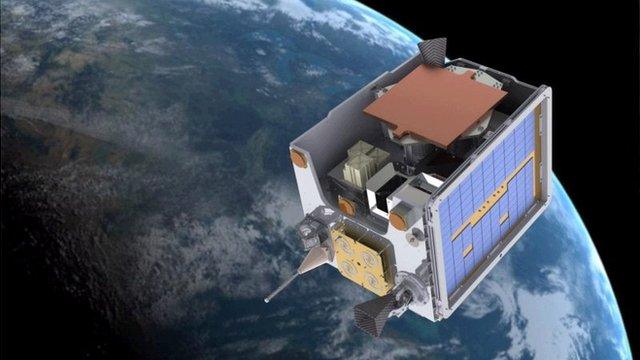UK satellite 'sets sail' for return to Earth
- Published
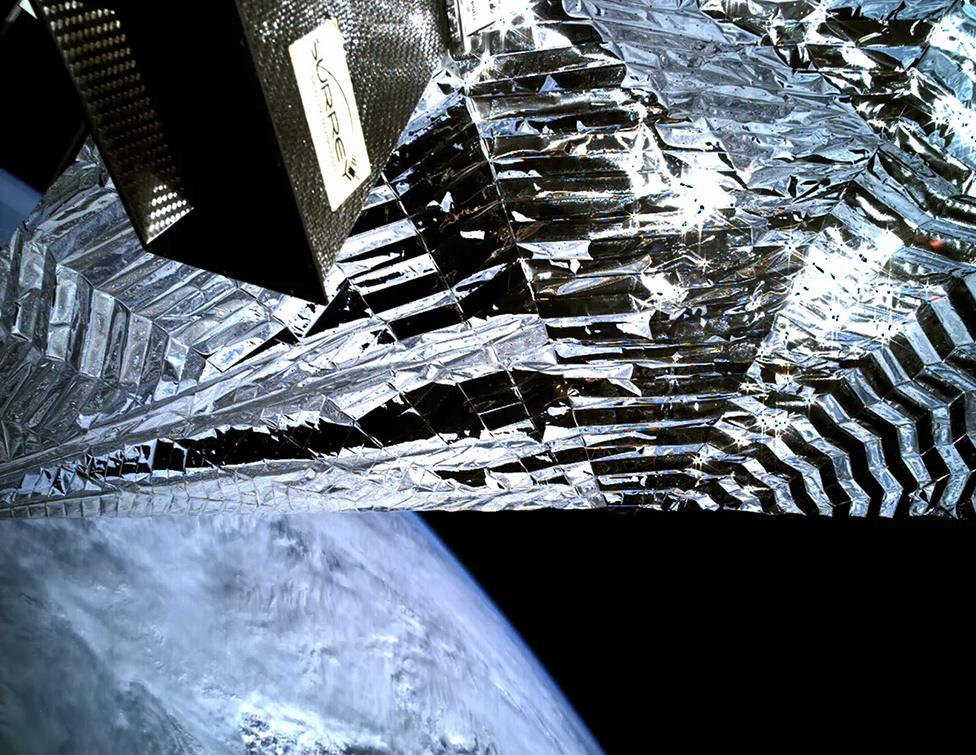
A British satellite in space has just "set sail" to return to Earth.
TechDemoSat-1 was launched in 2014 to trial a number of new in-orbit technologies but has now reached the end of its operational life.
To bring it out of the sky faster than would ordinarily be the case, it has deployed a "drag sail".
This large membrane will catch residual air molecules at its altitude of 635km and pull TDS-1 quickly into Earth's atmosphere where it will burn up.
There is a lot of interest currently in "clean space" technologies.
The orbital highways above the planet are set to become congested with thousands of spacecraft in the coming years, and serious efforts need to be made to tidy away redundant hardware and other space junk if collisions are to be avoided.
TechDemoSat was built by SSTL of Guildford, and its 6.7-sq-m Kapton drag sail, called Icarus-1, was developed by Cranfield University.
"It is fantastic to see an image of TechDemoSat's deployed drag sail captured by the onboard inspection camera," said SSTL's managing director, Sarah Parker.
"This in-orbit image of a deployed drag sail on one of our satellites is a first for us and is a fitting culmination of mission operations for this highly innovative small satellite."
Already, the Icarus design is starting to appear on other satellites as well.
TechDemoSat was part-funded by Innovate UK and was jointly operated by SSTL and by the Satellite Applications Catapult in Harwell.
It had eight payloads, including one that was developed by students to measure high-energy particles in space.
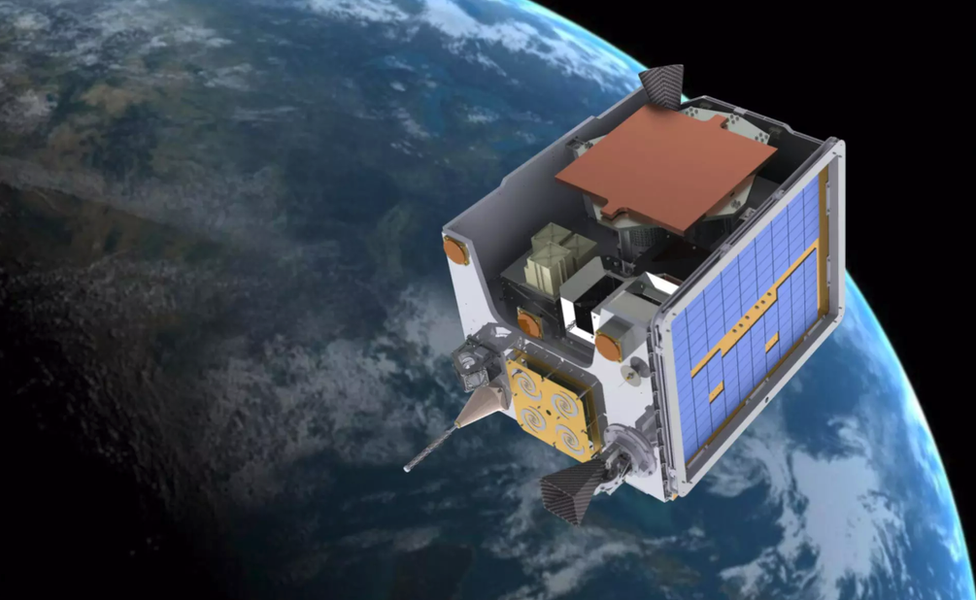
Artwork: TDS-1 was launched in 2014
One of TechDemoSat's really big successes, however, was its Sea State experiment.
This used a GPS receiver, rather like a radar, to monitor how signals from the Global Positioning System were reflected off the ocean surface.
This gave scientists a powerful tool to assess the roughness of the sea surface, and from that to gauge the strength of the winds.
The lessons learned with this reflectometry experiment on TDS-1 were incorporated into the instruments that were later flown on the US space agency's CYGNSS (Cyclone Global Navigation Satellite System) mission.
CYGNSS was put up specifically to peer through hurricanes to help forecast the strength of the winds when the storms make landfall.
The Innovate UK agency, along with the Harwell Catapult, have continued the concept of in-orbit demonstration (IOD) satellites.
They have just supported the launch of a small spacecraft that will test a compact microwave radiometer.
US-based Orbital Micro Systems expects to use a network of these instruments to make rapid weather forecasting updates.
Jonathan.Amos-INTERNET@bbc.co.uk, external and follow me on Twitter: @BBCAmos, external
- Published24 May 2019
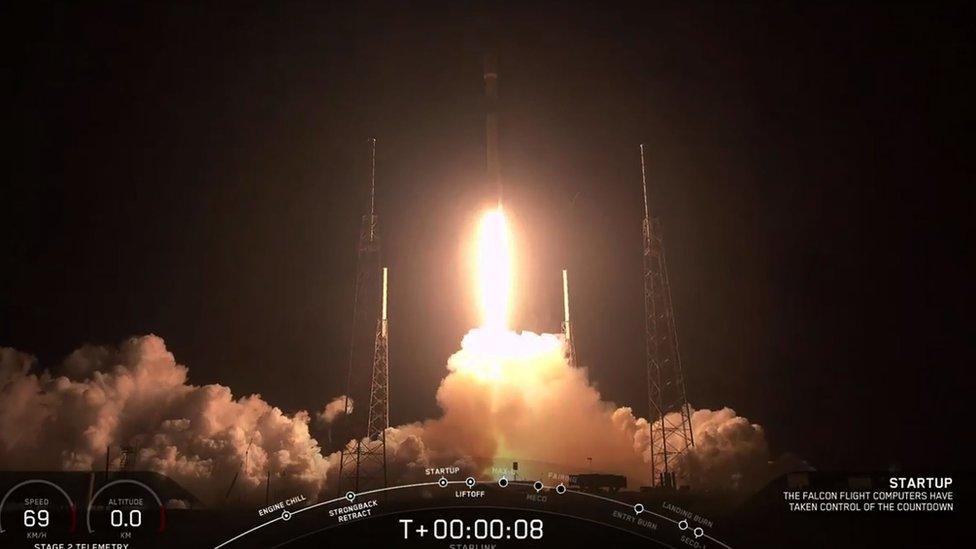
- Published15 February 2019
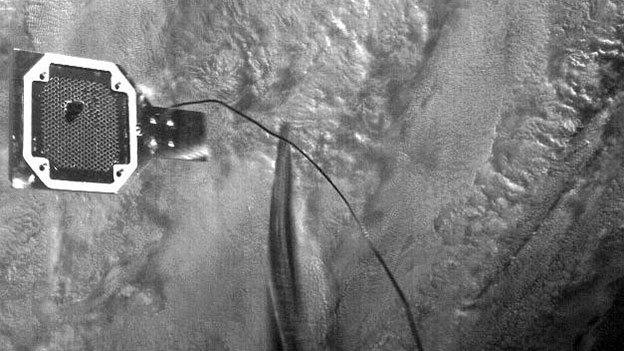
- Published18 April 2017

- Published7 December 2017

- Published8 July 2014
